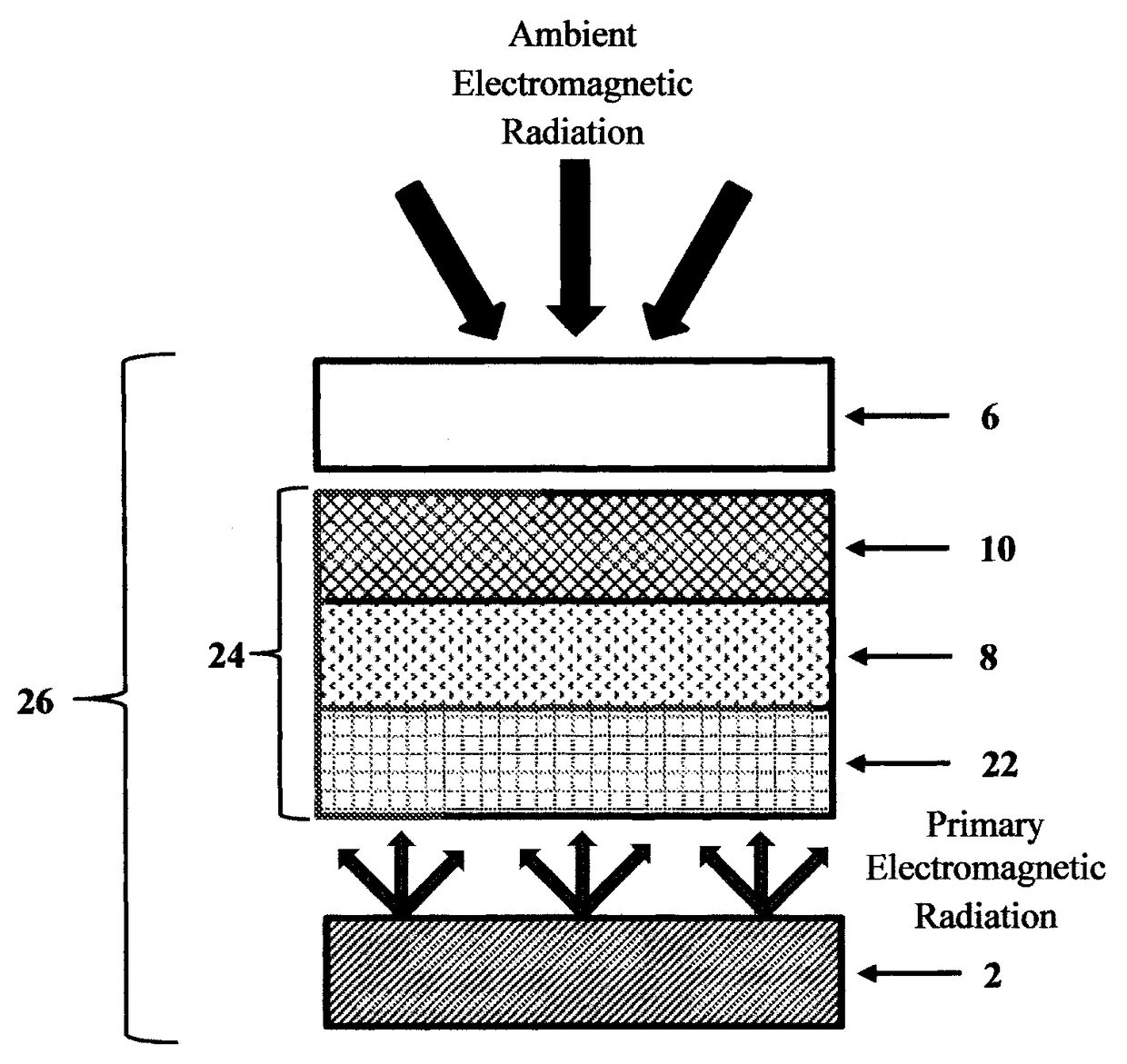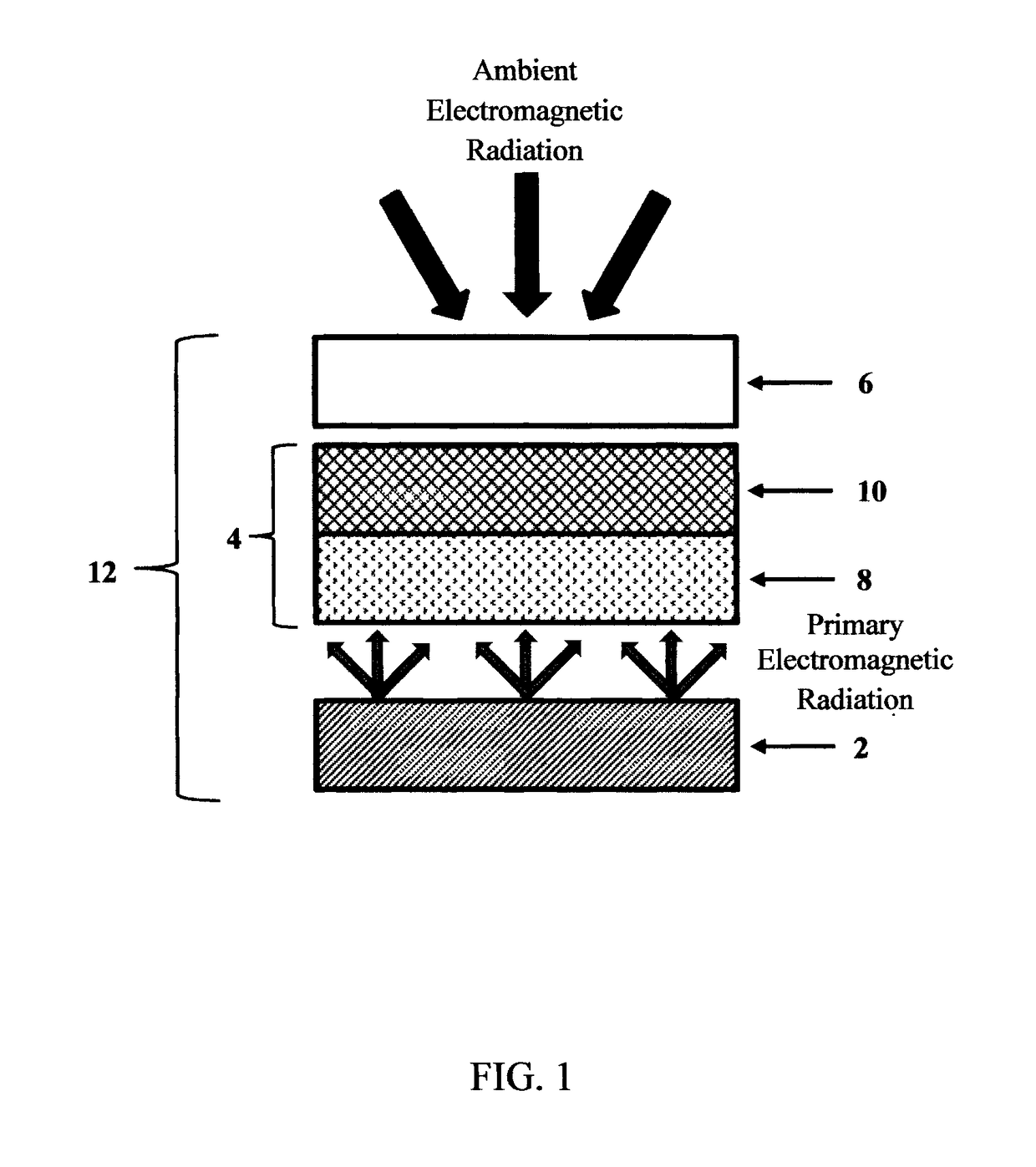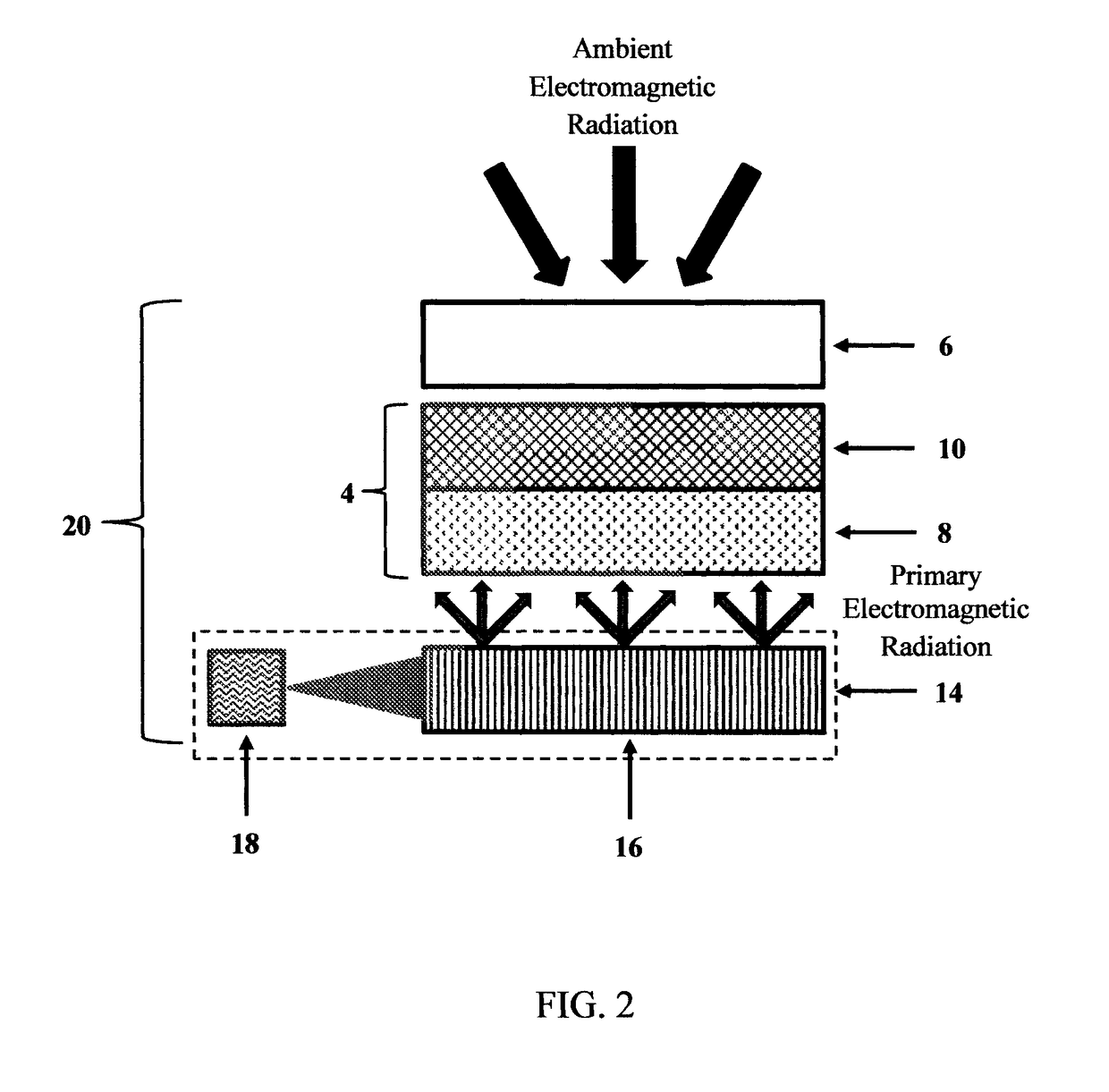Luminous systems
a technology of luminous systems and light sources, applied in the field of luminous systems, can solve the problems of difficulty in manipulating the reflected light of the system, observed visible color produced when the white illumination source is non-powered, and significant energy loss, so as to increase the photolytic and thermal stability of the multilayer structure, increase optical scattering, and increase the effect of optical scattering
- Summary
- Abstract
- Description
- Claims
- Application Information
AI Technical Summary
Benefits of technology
Problems solved by technology
Method used
Image
Examples
example 1
on of Diffusion Layer (Characterized as 10 in FIGS. 1, 2, and 5-7)
[0095]A formulation containing 0.9120 parts screen printing ink, such as Automark APL Dye-Based Clear, 0.00502 parts defoamer, such as Tego® Foamex N, 0.00201 parts of wetting agent, such as Tego® Wet 270, 0.00575 parts titanium dioxide, 0.000182 parts dispersant, such as DisperBYK® 112, and 0.0751 parts spherical glass beads, such as Sphericel® 110P8, was prepared and stirred at room temperature. The formulation was screen printed onto 10 mil carrier substrate, such as a clear polyester substrate (Mylar), through a 60 mesh steel screen and dried at 80° C. for 30 minutes to yield a 2.3 mil or 58 micron thick, diffusion layer.
example 2
on of Energy Conversion Layer (Characterized as 8 in FIGS. 1, 2, and 5-7) and Preparation of Multilayer Structure (Characterized as 4 in FIGS. 1 and 2)
[0096]A formulation containing 0.9535 parts screen printing ink, such as Automark APL Dye-Based Clear, 0.00449 parts defoamer, such as Tego® Foamex N, 0.00220 parts of wetting agent, such as Tego® Wet 270, and 0.000195 parts 3-cyanoperylene-9,10-dicarboxylic acid 2′,6′-diiosopropylanilide in 0.0389 parts dioxolane, and 0.00045 parts 3,4,9,10-perylene tetracarboxylic acid bis(2′,6′-diisopropyl) anilide was prepared and stirred at room temperature. The formulation was printed onto the diffusion layer prepared in Example 1 through a 60 mesh steel screen and dried at 80° C. for 60 minutes to yield a 1 mil or 25 micron thick, yellow daylight color energy conversion layer coupled to the diffusion layer, thereby resulting in a multilayer structure.
example 3
on of Diffuse Reflection Layer (Characterized as 6 in FIGS. 1, 2, and 5-7)
[0097]A formulation containing 0.9747 parts screen printing ink, such as Automark APL Dye-Based Clear, 0.00509 parts defoamer, such as Tego® Foamex N, 0.00201 parts of wetting agent, such as Tego® Wet 270, 0.0166 parts titanium dioxide, and 0.00166 parts dispersant, such as DisperBYK® 112 was prepared and stirred at room temperature. The formulation was screen printed onto 10 mil carrier substrate, such as a clear polyester substrate (Mylar), through a 60 mesh steel screen and dried at 80° C. for 30 minutes to yield a diffusion reflection layer.
PUM
| Property | Measurement | Unit |
|---|---|---|
| wavelengths | aaaaa | aaaaa |
| wavelengths | aaaaa | aaaaa |
| angle | aaaaa | aaaaa |
Abstract
Description
Claims
Application Information
 Login to View More
Login to View More - R&D
- Intellectual Property
- Life Sciences
- Materials
- Tech Scout
- Unparalleled Data Quality
- Higher Quality Content
- 60% Fewer Hallucinations
Browse by: Latest US Patents, China's latest patents, Technical Efficacy Thesaurus, Application Domain, Technology Topic, Popular Technical Reports.
© 2025 PatSnap. All rights reserved.Legal|Privacy policy|Modern Slavery Act Transparency Statement|Sitemap|About US| Contact US: help@patsnap.com



